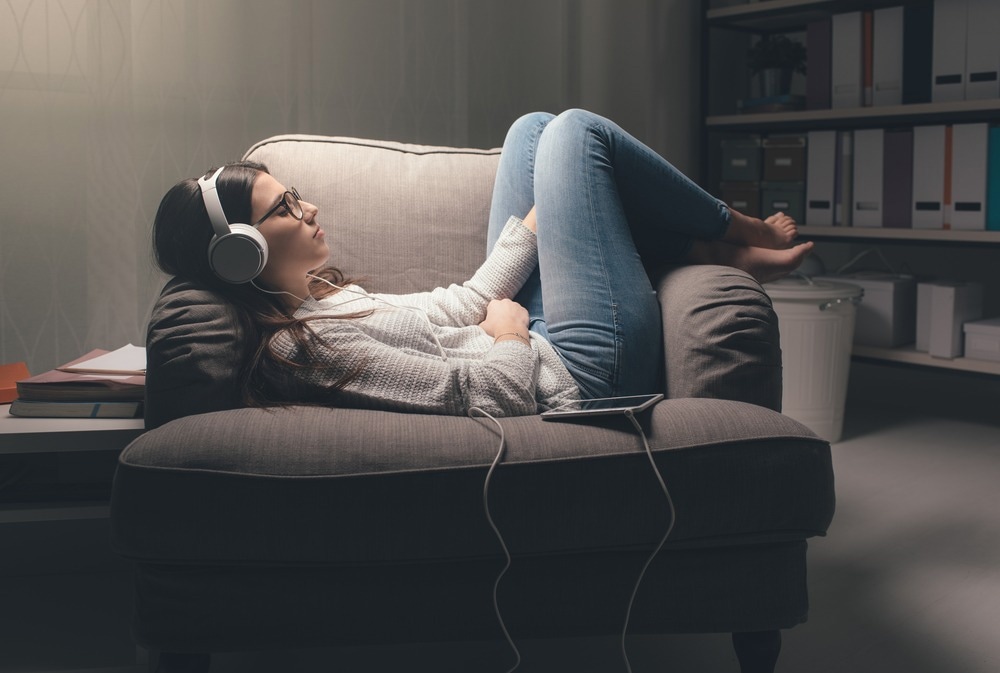In a study published in Frontiers in Pain Research, researchers showed that emotional responses to relaxing and favorite music predict hypoalgesia.
 Study: Emotional responses to favorite and relaxing music predict music-induced hypoalgesia. Image Credit: Stokkete/Shutterstock.com
Study: Emotional responses to favorite and relaxing music predict music-induced hypoalgesia. Image Credit: Stokkete/Shutterstock.com
Music can reduce anxiety and pain in patients, albeit the underlying mechanisms remain poorly defined. Pain remains a significant individual and societal burden, warranting alternatives without heavily relying on pharmacological analgesics. As such, music may represent a viable non-pharmacological intervention.
Further, subject-preferred music appears to induce a superior effect in relieving pain. This can be approached by allowing participants to select the most pleasant music from a prespecified list of songs or listen to their favorite music during the study. Nevertheless, the richness of emotions, meanings, and associations involved when listening to favorite music is poorly understood, especially regarding pain relief.
About the study
In the present study, researchers evaluated which subjective aspects of listening to relaxing and favorite music were crucial for hypoalgesia. Sixty-three healthy individuals, aged 21.3, on average, participated in this study. A thermal contact probe was used to induce painful thermal stimuli on the inner forearm surface.
Music tracks for the study were participants’ two favorite songs, each running at least three minutes and twenty seconds. Participants selected songs that would represent their all-time favorite music and were chosen by asking which tracks they would bring to a desert island. Additionally, relaxing music provided by a company was used. The experiment paired thermal stimulations with music excerpts.
The procedure included a series of seven-minute blocks, each representing different conditions, such as favorite music, relaxing music, scrambled versions, and silence. Each block comprised eight 50-second cycles of music and stimulation. During each cycle, music, silence, or scrambled music was played for 35 seconds, followed by stimulation for 15 seconds.
Participants rated the unpleasantness and intensity of the pain after each stimulation. Likewise, they indicated the number of chills, frissons, or thrills, emotional arousal, and pleasantness of the music. Participants were asked questions about their favorite songs/music at the end of the session. A thematic content analysis was performed to examine whether the absence or presence of specific themes moderated the effects of favorite music on pain ratings.
Favorite songs can reduce pain
The researchers noted that favorite music reduced the intensity and unpleasantness of the pain compared to scrambled music and silence. Relaxing music caused no significant reduction in pain intensity; however, the effect on unpleasantness approached significance. Further, favorite music significantly decreased pain relative to relaxing music. There were no significant differences between scrambled music and silence.
Music was perceived as more pleasant, producing more chills than scrambled versions. Besides, favorite music had higher average ratings on these measures than relaxing tracks. The incidence of chills influenced the unpleasantness and intensity of the pain. Meanwhile, the pleasantness of the music had no significant effect on pain intensity. Emotional arousal ratings did not affect pain.
The team performed mediation analyses to test whether emotion could explain the difference in effect between relaxing and favorite music. They observed a significant indirect effect on pain intensity and unpleasantness through chills. However, there was no significant effect of music pleasantness on pain unpleasantness. Theme analysis revealed 17 themes centered on listening time (4 themes), activities (3), emotion (4), musical aspects (2), or associations (4).
Further analyses were focused on the four emotion themes – calming/relaxing, energizing/activating, moving/bittersweet, and happy/cheerful. Happiness was the most frequent emotion theme, with subjects frequently reporting that music made them happy. Moving/bittersweet music did not have a concrete purpose, like reducing anxiety, improving mood, or increasing energy.
There was a near-significant effect of moving/bittersweet music on pain unpleasantness ratings, whereas calming/relaxing music had no significant impact. Other themes had no apparent effect. In addition, a second mediation analysis investigated whether the impact of emotional themes could be explained by subjective emotions (chills, pleasantness, and emotional arousal).
The moving/bittersweet theme significantly predicted subjective emotions. On the other hand, there was a negative association between chills and happy/cheerful, energizing/activating, and relaxing/calming themes, and no association between emotional arousal or music pleasantness and these three themes.
Conclusions
Taken together, favorite music significantly reduced pain, unpleasantness, and intensity relative to silence and scrambled music, while relaxing music was less effective. The incidence of chills was a significant mediator of pain unpleasantness and intensity. Thus, a neuropsychological process underlying chills may exist, which might preferentially activate during favorite music. Moreover, moving/bittersweet music may have a superior effect in decreasing pain. Nevertheless, further research is needed to corroborate the findings.